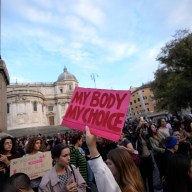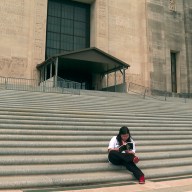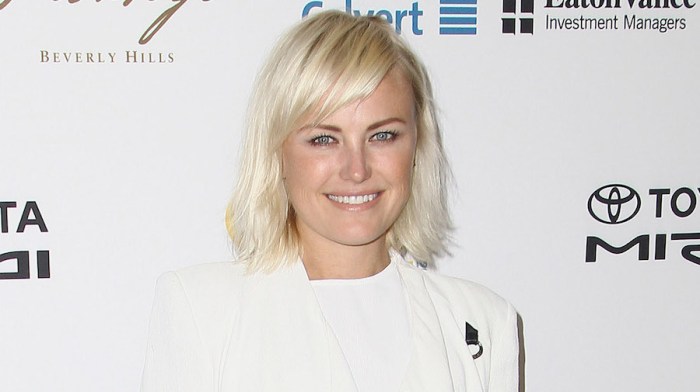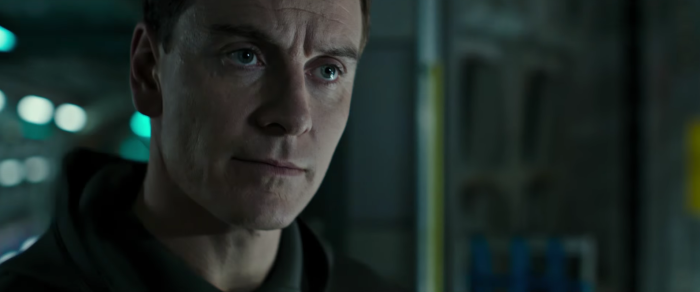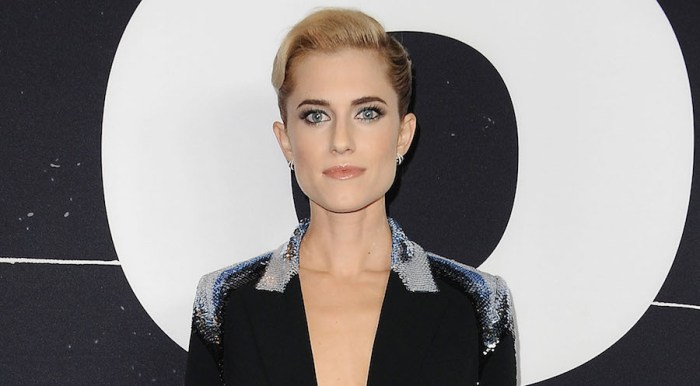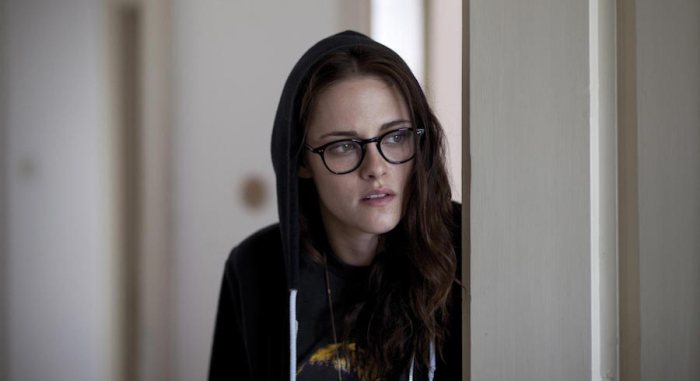It started distressingly early during “The Good Dinosaur,” distressingly enough. Pixar’s latest is unusually childish, and it’s been rewarded with what’s, for them, unusually lukewarm reviews and middling box office. But my eyes quickly started to water, even before its runt of an Apatosaurus named Arlo watched as his macho father died a la Bambi’s mom. Arlo was born small and is a total weakling, freaking out at the slightest bit of distress. He’s pushed around by his bigger, stronger siblings, and he’s so down on himself that it’s inevitable the plot will revolve around him being forced to man up. RELATED: Review: “Creed” shows how to do “Rocky” and fan fiction right This is all pretty stock, and yet after a good 15 minutes I considered fleeing the theater for the bathroom and bawling into some toilet paper. And I don’t even know why. I’m not a crier. The most I can muster is getting misty-eyed. (I mean, I cry a little. I have student debt.) Something about “The Good Dinosaur” and its simplistic look at childish fragility (and Arlo’s movingly childlike voice, delivered by actual child Raymond Ochoa) triggered something deep inside me. I didn’t cry, but I came close — just as I did, sometimes briefly, sometimes repeatedly, during “Creed,” during “Carol,” during “Brooklyn,” during “Chi-Raq,” during “45 Years.” (I managed to stay dry during the whale-cannibal movie “In the Heart of the Sea.”) This has been happening a lot, and I’m not the only one. Fellow critics have confessed to tearing up through a decent chunk of the fall movie season’s classier wares. This summer countless reviews included admissions of crying like a maniac through “Inside Out,” another Pixar film, and one far more mature than “The Good Dinosaur” — though also more sadistic. Where kids saw brightly-colored characters acting silly, adults got to relive that exact moment when childhood gave way to neurotic adolescence — when feelings became more complex, when one learned that life is often sad if not worse, and the only way to stay sane is to accept that. This isn’t really a trend, just happenstance, culled from my own subjective experiences and from those of colleagues and/or friends. But it underlines something key about how sad films have evolved. It’s easy to call “Carol,” about a lesbian romance in the 1950s, and “Brooklyn,” about a young immigrant in New York, retro-melodramas, but they’re little like old-school tearjerkers. Golden Age Hollywood weepies were masterful at extracting tears from ducts. Films like “Stella Dallas” and “The Best Years of Our Lives” knew the power of sad situations spliced with deeply felt performances and stirring music. RELATED: Review: “Carol” is Todd Haynes’ muted but passionate look at women in love “Carol” and “Brooklyn” are more muted. They never go in for the big kill — the moment when the strings rise and the camera pushes in on a beautifully lit face about to cry (or actually crying). They underplay, and they study characters (and the actors playing them) as they hold it all in, trying to eke by without collapsing into a puddle of tears. The same with “Creed.” It’s the latest in a franchise that began, with 1976’s “Rocky,” as a male weepie, following a mopey sadsack (Sylvester Stallone) on the road to what were, in its bittersweet ending, happy tears. “Creed” has an anguished backstory for its new lead, Michael B. Jordan’s Adonis, and a medical scare for aging Rocky himself. But it stays cool and never overtly manipulates us. It’s very 2015. This modern style of weepie is the result of decades of shifting mores. We’ve become, as commentators never tire of pointing out, more self-aware, and thus reluctant to be so worked over. It’s become old hat for critics to deploy words like “manipulative” as weapons, as though having our feelings grasped with both hands was a bad thing. (Of course, few complain when thrillers, from Hitchcock through today’s blockbusters, do the same thing. That kind of manipulation is “brilliant.”) We know when we’re being played (like a piano, as Hitch would say), and we’ve developed a kneejerk reaction against soap opera that’s every bit as kneejerk as giving into a sad, sad movie. This has evolved too. Tearjerkers are back, but in a different form. They’re sad and they want us to cry, but they know to not push us too far. They still know how to get under our skin. They’re calm and collected but still gutting. They’re closer to old non-American weepies, like ones from England (such as 1945’s very reserved almost-romance “Brief Encounter”) or Italy (like “Umberto D,” one of the great man-and-his-dog love stories). RELATED: Review: “The Good Dinosaur” is the rare Pixar primarily for kids The English “45 Years” is particularly crafty: It works the emotions primarily with what isn’t said. It follows longtime marrieds, played by Charlotte Rampling and Tom Courtenay, who discover shocking news — news that suggests the latter may have never stopped loving a long-dead lover, perhaps more than he ever loved his wife. There are no fireworks or melodramatic twists. (It’s British, after all.) But watching Rampling ever-so-slightly unravel, communicated entirely on her face, is a slow-burn weepie. Among the saddest images this year can be found in the opening of “Creed.” Phylicia Rashad’s Mary Anne, the widow of Carl Weathers’ Apollo Creed (killed by one of those evil Soviets in “Rocky IV”), goes to a juvie to meet with the pre-pubescent Adonis (then played by Alex Henderson), the product of one of her husband’s affairs. Young Adonis has just been put in solitary for starting a fight, one of many. As Mary Anne speaks with him, Adonis confidently refrains from eye contact, staring into the distance with a hundred-yard stare he’s acquired through years of disappointment and emotional (and perhaps physical) abuse. Henderson’s delivery is steely and he seems tough beyond his years. His body language tells you everything you need to know. It sets us up to root for him as he gets older and better adjusted. And it’s the first of many, similarly underplayed moments worthy of a good cry. (Another tiny moment that may trigger nostalgic tears amongst a certain generation: Rashad’s no-nonsense head tilt as she challenges something Adonis says — a move she busted out every week on “The Cosby Show.”) RELATED: Review: “Brooklyn” is a melodrama deeply felt and deeply smart These are all subtle tears, but Spike Lee’s “Chi-Raq” goes for the jugular. A righteous call to action (which is not to say arms) against gun violence, it’s a broad, filthy (and angry) satire but, this being a Spike Lee joint, it has no compunction over getting very, very serious. Among the supporting characters is a mom played by Jennifer Hudson, whose 7-year-old daughter was killed in gang warfare. A scene of her cleaning her child’s blood off the street is played plainly, with the usual insistent Spike Lee score, but without any additional commentary. It knows this sight is enough to cause a geyser of tears. That these films arrive now, when the news has gotten rough, if not apocalyptic, is an accident. There’s plenty of precedent. For one thing, Pixar has long been in the subtle weepie department, from the Sarah MacLachlan-backed memory montage in “Toy Story 2” to the absolutely brutal, even sadistic opening stretch of “Up.” Last year’s “Beyond the Lights” was another melodrama at once old school and cool-tempered. These new weepies do reveal how much we as a culture have changed in our tolerance of movies that want to jerk our tears. We may be baby-stepping outside of being so self-aware that we start watering up at the mere sight of a sad, green dinosaur being sad. Though anyone who doesn’t wail like a baby at Douglas Sirk’s 1959 remake of “Imitation of Life” is, to mis-paraphrase Oscar Wilde, made of stone. Follow Matt Prigge on Twitter @mattprigge
Why are this year’s Oscar contenders actually making me cry?

Pixar







